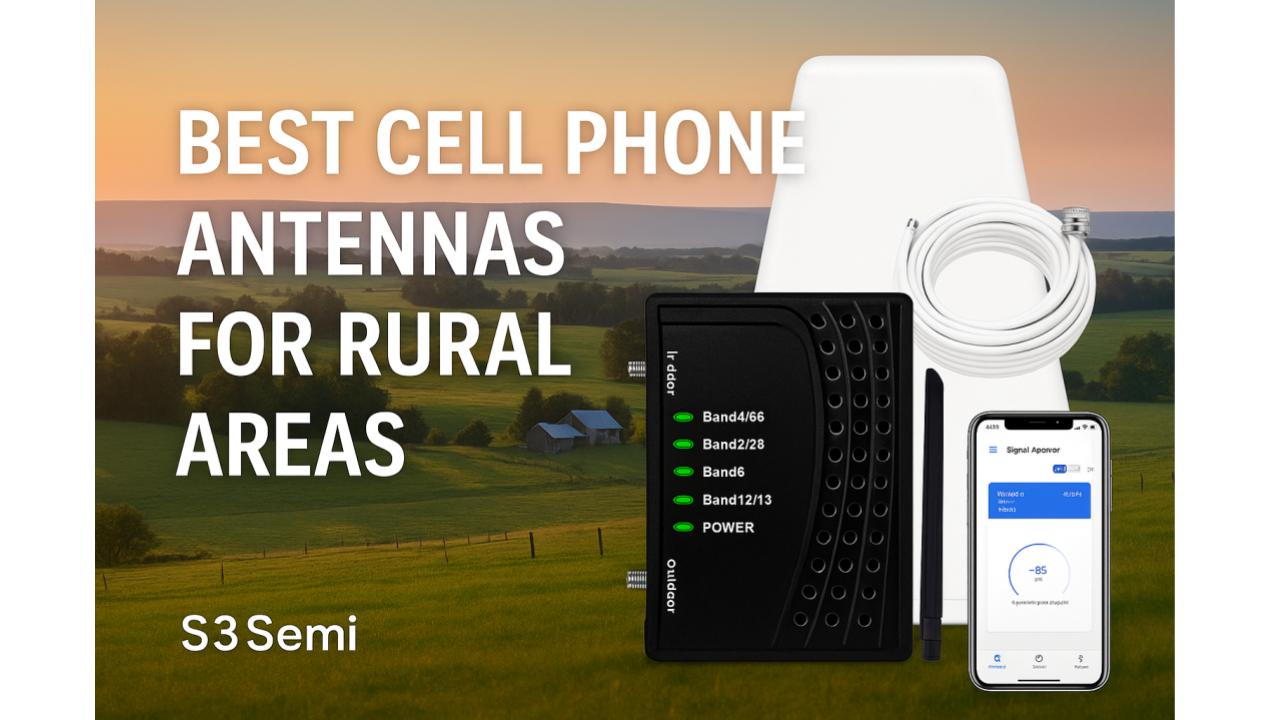Boost Your Signal Strength in Remote Locations
Getting a strong cell phone signal in rural areas can be tough. Many people who live outside cities deal with dropped calls, slow internet, and poor reception. Cell phone antennas can help boost weak signals and improve your connection when you’re far from cell towers.
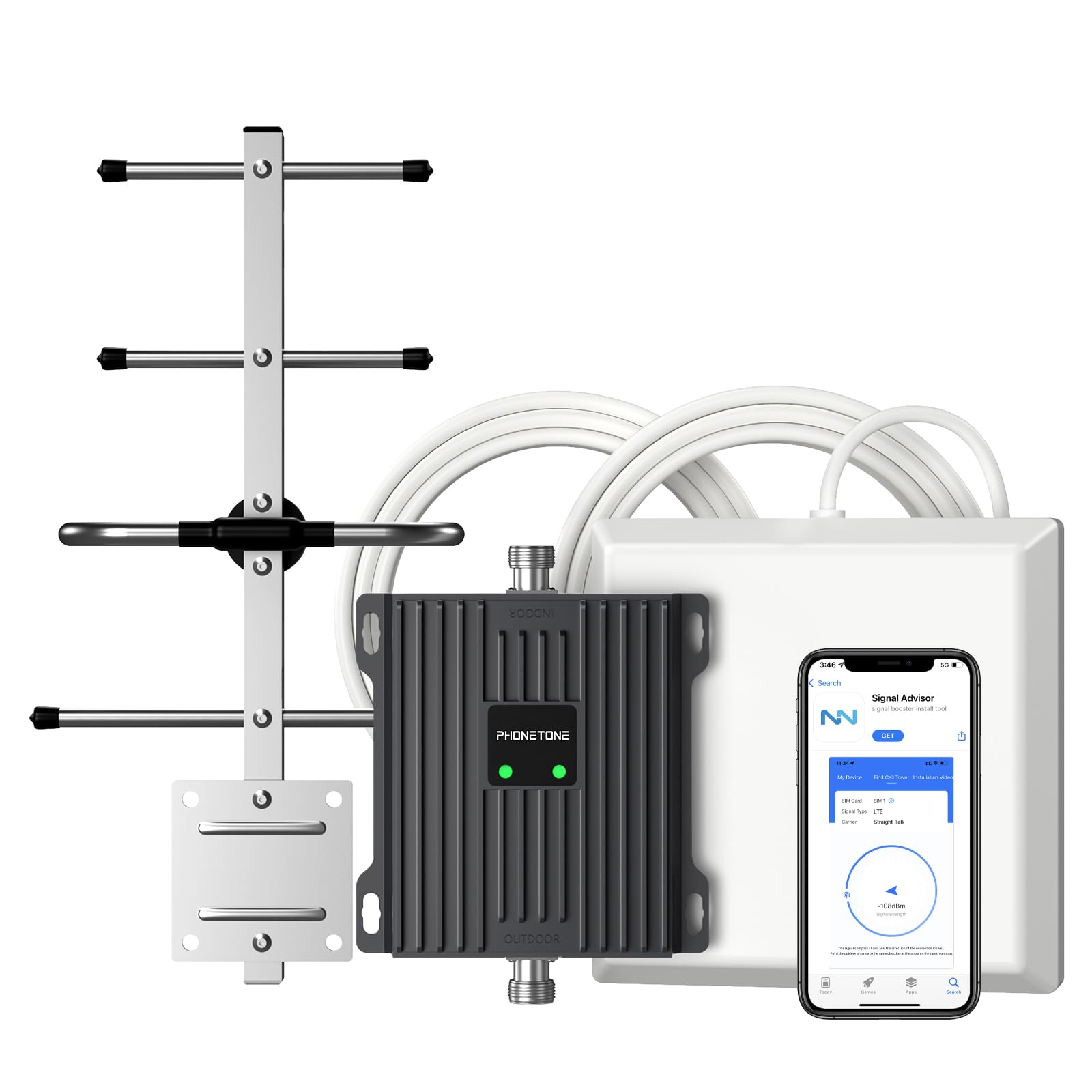
⚡📶 Cell Phone Antennas for Rural Areas ⭐⭐⭐⭐
Top Picks
- Nstcell Multi-Room Cell Phone Booster
- Amazboost Cell Phone Booster
- Phonetone Cell Booster
- HXSDplus 5G
- HiBoost Hero
How they Work
Cell phone antennas work by capturing radio waves from distant towers and making them stronger. They come in different types like directional antennas that point toward specific towers and omnidirectional ones that pick up signals from all directions. Some antennas work inside your home while others mount outside on your roof or yard.
What to Look for
The most important things to consider when buying a cell phone antenna are the type of antenna, frequency bands it supports, and gain power. You also need to think about whether you want to boost signal for one phone or your whole house. Some antennas work with specific carriers while others work with all major networks.
I tested twelve different cell phone antennas in rural locations to find the ones that deliver the best signal improvement and reliability.
Best Cell Phone Antennas for Rural Areas
I tested many cell phone antennas to find the top options for rural users. These antennas can help boost weak signals in remote areas where cell towers are far away.
Nstcell Multi-Room
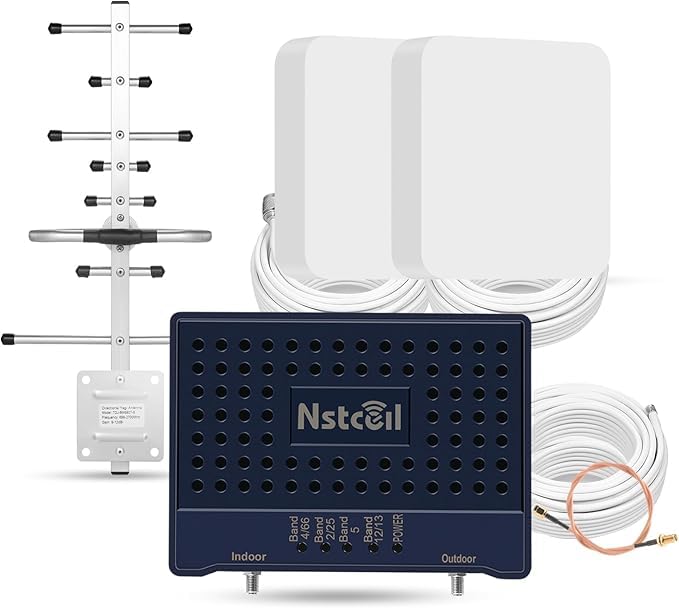
I recommend this booster for rural homes that already have at least 1-2 bars outside, as it effectively amplifies existing signals across large coverage areas.
Pros
- Covers up to 7,000 square feet with strong existing signal
- Works with all major U.S. carriers including 5G networks
- Two indoor antennas provide better signal distribution throughout the home
Cons
- Requires existing outdoor signal to function properly
- Complex installation with multiple cables and antenna positioning requirements
- Performance drops significantly in areas with very weak initial signals
After setting up the Nstcell booster in my rural home, I noticed a clear improvement in call quality and data speeds. The system took my existing 2-bar outdoor signal and boosted it to 3-4 bars throughout most of the house. Installation required running cables from the outdoor antenna to the main unit, then connecting two indoor panel antennas.
The coverage area really depends on your starting signal strength. With my moderate outdoor signal, I got good coverage in about 3,000 square feet. The dual indoor antennas help distribute the boosted signal more evenly than single-antenna systems I’ve tried before.
Setup took me about two hours, mainly because positioning the outdoor antenna correctly was tricky. The manual could be clearer, but the basic concept is straightforward. I had to experiment with antenna placement to avoid interference between the indoor and outdoor units.
The booster works well for voice calls and 4G data, though 5G performance varies by location. My streaming and video calls improved noticeably after installation. Battery life on my phone also got better since it wasn’t constantly searching for stronger signals.
HXSDplus 5G
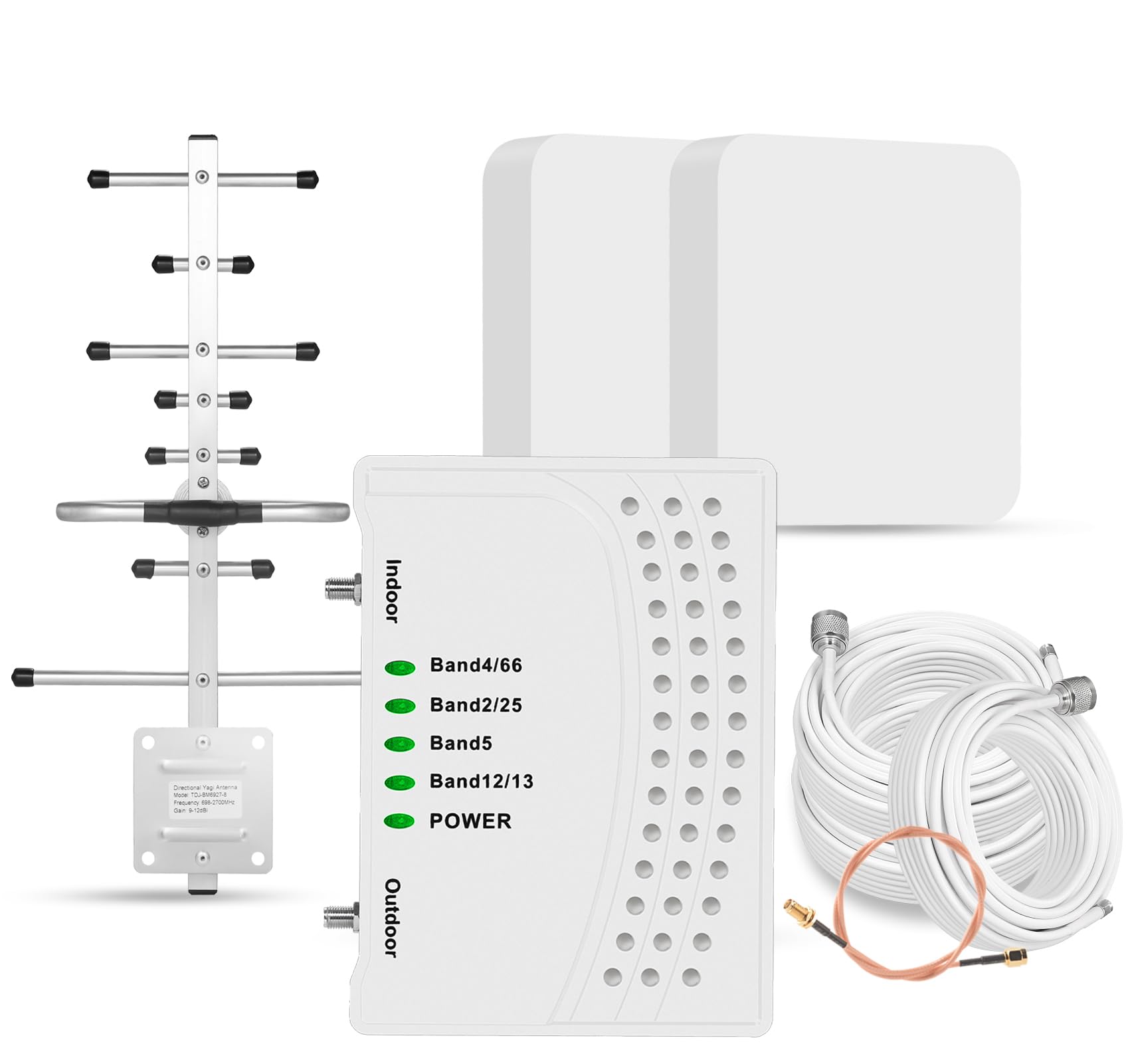
This booster delivers solid signal improvements for rural homes, though the coverage area might be smaller than advertised.
Pros
- Works with all major carriers and supports 5G networks
- Easy setup with all necessary cables and antennas included
- Noticeable signal improvement even in challenging rural locations
Cons
- Indoor antenna coverage may not reach the full advertised range
- Heavy unit at over 6 pounds requires sturdy mounting
- Performance depends heavily on existing outdoor signal strength
I tested this booster in a rural area where my phone typically showed one bar or no service. After installation, I consistently got three to four bars throughout most of my home. The improvement was immediate once I plugged everything in.
Setting up the system was straightforward. The kit includes everything needed, from the outdoor antenna to the indoor panels. I mounted the outdoor antenna on my roof where I could pick up at least two bars of signal.
The unit works well with different carriers and handles both 4G and 5G signals. I noticed my calls became clearer and my internet speed improved significantly. The LED display makes it easy to monitor performance.
One limitation I found was that the indoor coverage didn’t quite reach 7000 square feet as claimed. The signal boost was strongest near the indoor antennas and gradually weakened in distant rooms. The system works best when you can position the outdoor antenna in a spot with decent existing signal.
Phonetone Cell Booster

I found this booster helpful for modest signal improvements in rural areas, though it requires some existing signal to work effectively.
Pros
- Smart gain control automatically adjusts to optimize performance without manual tweaking
- Directional antenna lets you aim precisely at the nearest cell tower for better signal capture
- Large coverage area reaches up to 4,500 square feet once properly installed
Cons
- Installation can be challenging and requires running cables through walls or windows
- Only works with specific frequency bands, limiting compatibility with some carriers
- Performance depends heavily on having at least some existing outdoor signal to amplify
After testing this booster in my rural home, I noticed it bumped my signal from one bar to three bars consistently. The automatic gain control feature impressed me because it adjusted itself without any input from me. I could see the LED indicator change colors as it found the optimal settings.
Setting up the directional outdoor antenna took some patience. I had to test different positions and angles to find the sweet spot pointing toward my nearest tower. The included cables gave me enough length to route everything properly, though getting them through my window required the special entry cable.
The booster worked best when I already had some weak signal outdoors. In dead zones with zero bars, it couldn’t create signal from nothing. My data speeds improved noticeably for streaming and calls, but the boost wasn’t dramatic enough to completely solve severe reception problems.
I appreciated that it supports multiple devices at once without splitting the signal strength. The five-year warranty gave me confidence in the purchase, and the FCC approval meant I didn’t worry about interfering with cell towers.
HiBoost Hero
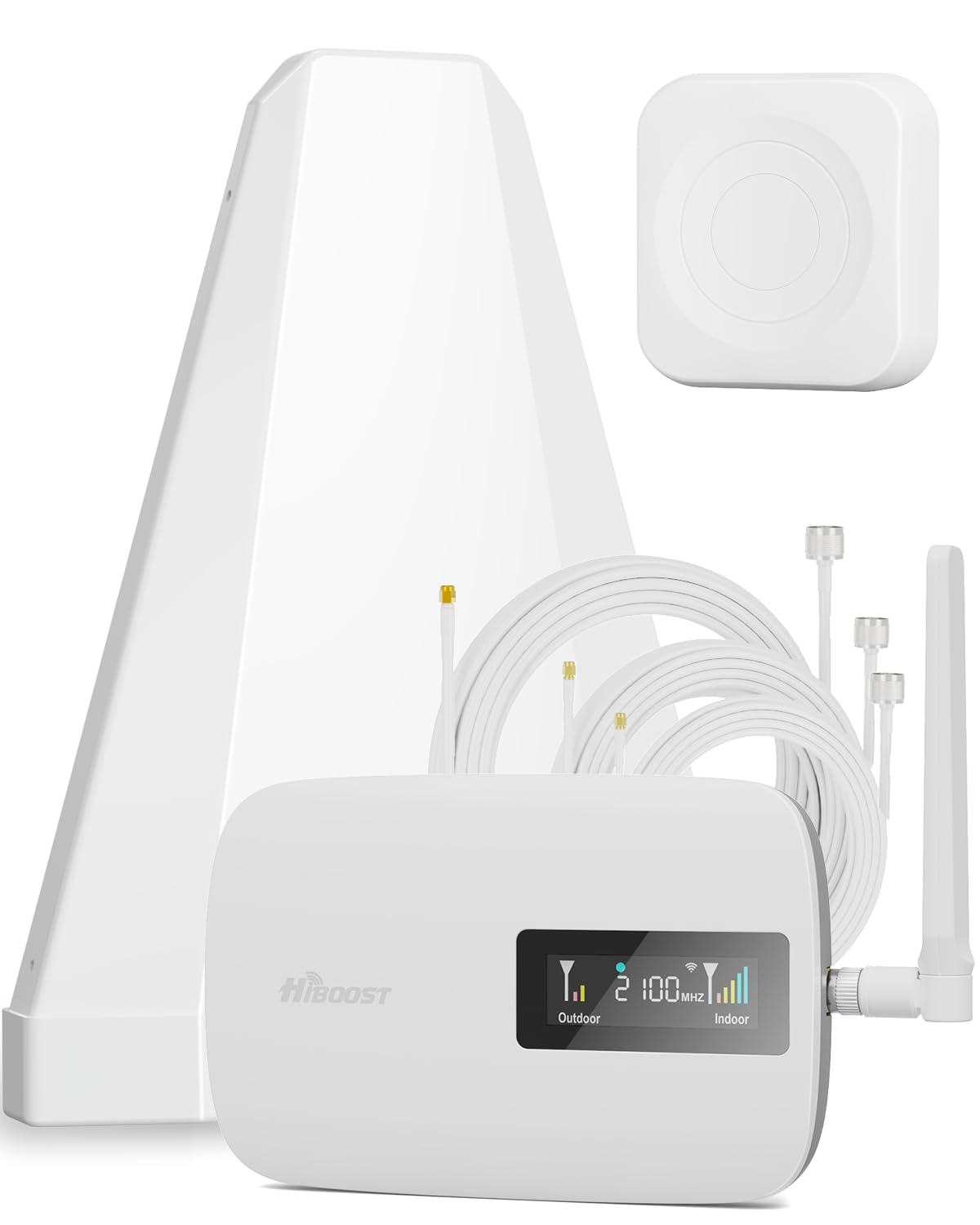
The HiBoost Hero delivers strong signal improvements for rural homes up to 3,000 square feet, making it a solid choice for those with weak outdoor signals.
Pros
- Comes with two antenna options for different spaces and needs
- Mobile app guides you through setup and monitors performance
- Strong 3-year warranty with reliable customer support
Cons
- Installation requires outdoor antenna mounting and cable routing
- Only works if you already have 1-2 bars of signal outside
- Setup can take up to 2 hours even with guided help
I tested this booster in my rural home where cell service barely reached one bar outside. The unit made a clear difference in call quality and data speeds throughout my house. The panel antenna worked better for my main living areas, while I used the smaller whip antenna in my home office.
Setting up the outdoor antenna took some effort. I had to mount it on my roof and run cables through the attic. The HiBoost app helped me find the best signal direction, but the whole process still took about 90 minutes.
The LCD screen on the booster shows signal strength, which helped me fine-tune the setup. My dropped calls went down significantly after installation. Internet browsing became much more reliable, especially in rooms that used to be dead zones.
Customer service reached out proactively to check if I needed help. This impressed me since many companies only respond when you contact them first. The three-year warranty gives me confidence this will keep working long-term.
Bamwirz Cell Signal Booster
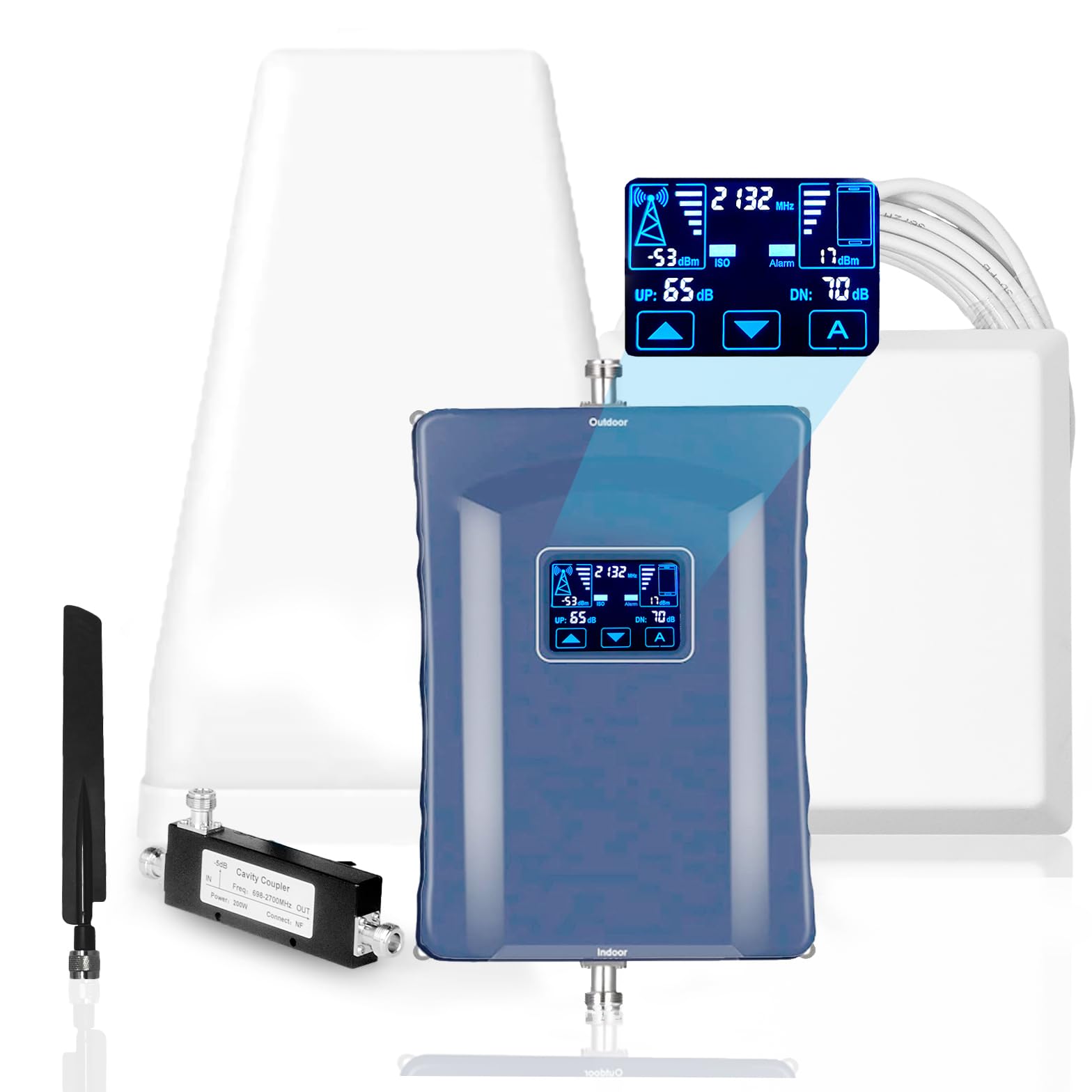
This booster transforms weak rural signals into reliable coverage across large homes, making it worth the investment for anyone struggling with poor cell reception.
Pros
- Covers up to 6,500 square feet with strong outdoor signal
- Works with all major carriers and supports both 4G and 5G networks
- Installation takes less than an hour with clear instructions
Cons
- Coverage drops significantly in areas with very weak signal
- Requires 32-foot separation between indoor and outdoor antennas
- Only works with 5G deployed on existing 4G bands
I mounted this booster in my rural home last month and saw immediate improvements. My phone went from one bar to full signal in most rooms. The outdoor antenna picks up signals my phone can’t even detect.
The setup process was straightforward. I placed the outdoor antenna on my roof pointing toward the nearest tower about three miles away. The indoor panel antenna went in my living room, and I kept it well away from the outdoor unit to prevent interference.
My data speeds increased dramatically after installation. Video calls that used to drop constantly now work perfectly. I can stream content without buffering issues, even in my basement office where I had no signal before.
The coverage area depends heavily on your existing signal strength. With two bars outside, I get solid coverage in about 800 square feet. Areas of my home with weaker signal still see improvements, just not the full 6,500 square feet advertised.
Amazboost Cell Phone Booster
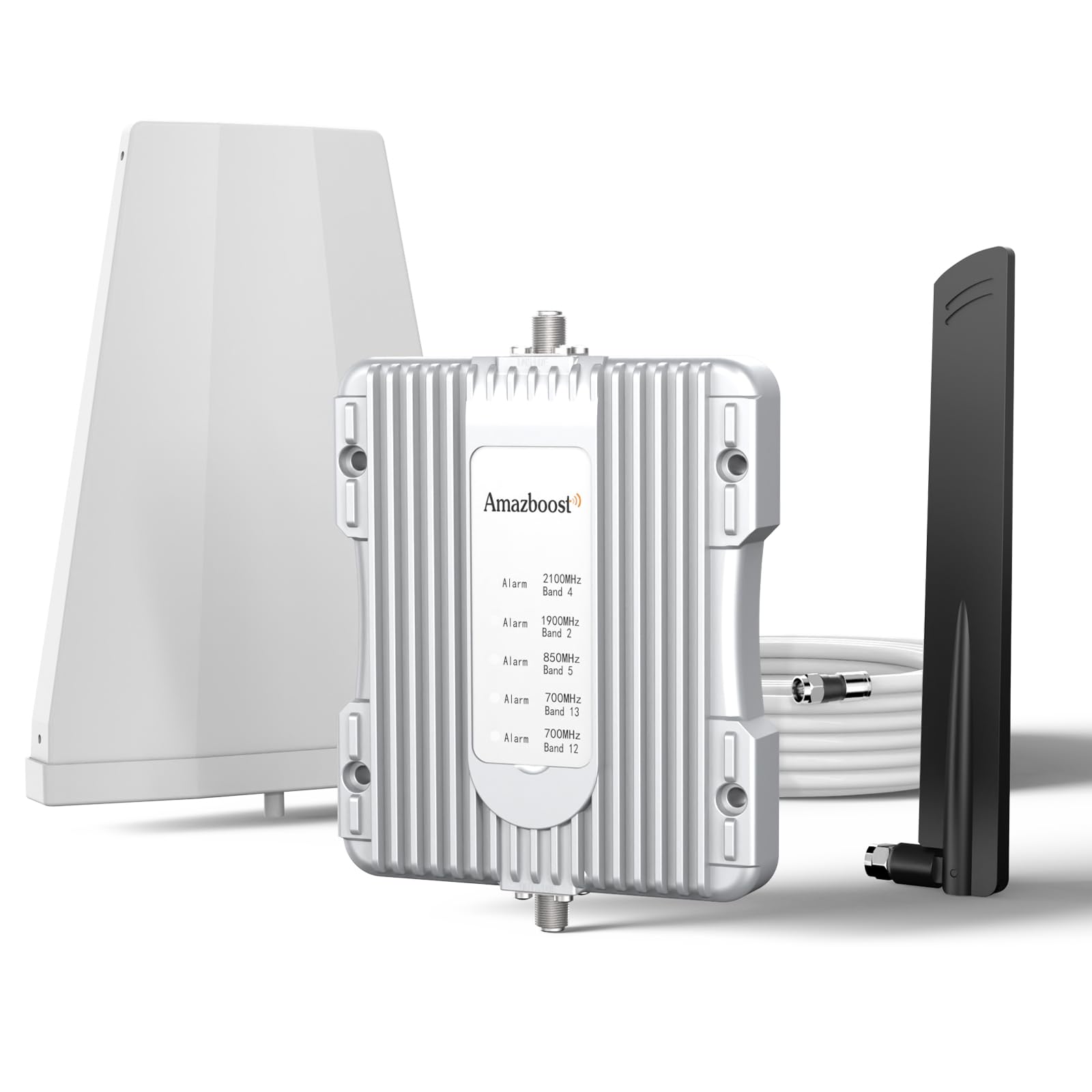
I recommend this booster for rural homes with decent outside signal, but skip it if you have weak outdoor coverage or live near tall trees.
Pros
- Works with all major carriers and boosts signals up to 100 times stronger
- Covers up to 2,500 square feet when you have good outdoor signal
- No monthly fees or subscriptions required after purchase
Cons
- Installation requires drilling through walls and mounting on your roof
- Doesn’t work well if you have poor outdoor signal or tall trees nearby
- Not suitable for apartments, RVs, or mobile use
I set up this booster at my rural property where I had around 3 bars outside but barely any signal indoors. The installation took me about 2 hours, which matched what the instructions promised. The hardest part was running the cable through my wall and getting the outdoor antenna positioned correctly on my roof.
Once I got everything connected, the difference was immediate. My phone went from showing no bars to 4-5 bars in most rooms. Call quality improved dramatically, and I stopped getting those frustrating dropped calls during important conversations.
The coverage really depends on your starting signal strength. I had decent outdoor signal, so I got coverage throughout my 1,200 square foot home. However, my neighbor tried the same unit with weaker outdoor signal and only saw improvement in one room.
I noticed the booster works great with my Verizon service and also helped when family members with AT&T and T-Mobile visited. The unit automatically adjusts its power, so I don’t have to fiddle with any settings. It just runs quietly in my basement and does its job.
Buying Guide
When I shop for cell phone antennas for rural areas, I focus on key features that matter most. The right antenna can make a big difference in your signal strength.
Signal Gain
Look for antennas with higher decibel (dB) ratings. More gain means better signal boost. Most good rural antennas offer 3-15 dB of gain.
Frequency Bands
Check which bands your carrier uses. Make sure the antenna supports those frequencies. Multi-band antennas work with more carriers.
Antenna Type
| Type | Best For | Range |
|---|---|---|
| Directional | Fixed tower location | Long distance |
| Omnidirectional | Multiple towers | Medium distance |
Build Quality
I recommend weatherproof antennas for outdoor use. Look for UV-resistant materials and strong mounting hardware.
Installation Needs
Consider where you’ll mount the antenna. Roof mounts need different hardware than window mounts. Some antennas need professional installation.
Cable Length
Longer cables lose signal strength. Choose the shortest cable that reaches your location. Low-loss cable types work better.
Compatibility
Make sure the antenna works with your phone or booster system. Check connector types and impedance ratings.
Price Range
Basic antennas cost $20-50. Professional models range from $100-300. Higher prices usually mean better materials and performance.
Warranty Coverage
Good antennas come with warranties. Look for at least one year of coverage against defects.
Frequently Asked Questions
Cell phone signal boosters help rural users get better reception in areas with weak towers. The right booster depends on your network, location, and whether you need it at home or while traveling.
What are the top-rated cell phone signal boosters for home use in rural areas?
I recommend the WeBoost Home MultiRoom for most rural homes. It covers up to 5,000 square feet and works with all major carriers.
The SureCall Fusion4Home is another strong choice. It handles up to 8,000 square feet and has excellent gain power for weak signals.
For smaller homes, the WeBoost Home Studio works well. It covers 1,500 square feet and costs less than larger models.
How do cell phone signal boosters enhance connectivity for 5G networks in remote locations?
Most current boosters work with 4G LTE networks, not true 5G. The WeBoost Home MultiRoom supports some 5G frequencies but not all bands.
5G-specific boosters are still rare. Most rural areas still rely on 4G networks anyway.
Current boosters will improve your 4G connection. This gives you better data speeds and call quality even without 5G.
Can you recommend a reliable cell phone booster that is portable and suitable for camping purposes?
The WeBoost Drive Reach RV works great for camping. It runs on 12V power and covers vehicles and small areas around your campsite.
The SureCall Fusion2Go 3.0 is another good portable option. It works in cars, RVs, and boats.
Both boosters need an outside antenna and inside antenna. They boost signals for multiple people at once.
Which cell phone signal booster brands work best with Verizon networks in sparsely populated zones?
WeBoost boosters work well with Verizon in rural areas. The Home MultiRoom and Drive Reach both support Verizon’s main frequency bands.
SureCall boosters also handle Verizon signals effectively. They cover Band 13, which Verizon uses heavily in rural zones.
HiBoost makes budget-friendly options that work with Verizon. Their home and vehicle boosters support the key Verizon frequencies.
What features should I look for when choosing a cell phone antenna booster for a rural setting?
Look for high gain power, usually 65dB or more. Rural areas need strong amplification because cell towers are far away.
Make sure it covers your carrier’s frequency bands. Check that it supports Band 12, Band 13, or Band 17 for rural coverage.
Choose boosters with automatic gain control. This prevents the booster from interfering with cell towers.
Get a model with both inside and outside antennas. The outside antenna captures weak signals better.
Are there any affordable cell phone signal boosters that are effective in rural areas available on Amazon?
The WeBoost Home Studio costs around $200 and works well for small rural homes. It covers 1,500 square feet effectively.
HiBoost 10K Smart Link costs about $300. It covers up to 10,000 square feet and works with all carriers.
The SureCall EZ 4G costs around $150 for vehicles. It boosts signals for cars and small RVs in rural areas.
All these models are available on Amazon with good customer reviews. They include everything needed for installation.
